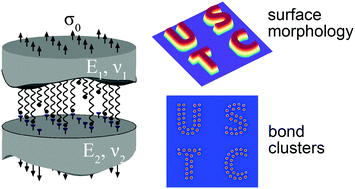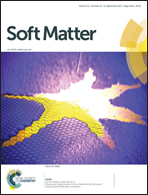Tuning interfacial patterns of molecular bonds via surface morphology
Abstract
Many studies have demonstrated that the mechanical properties of the extracellular matrix can significantly influence the morphology, strength and lifetime of focal adhesions. However, how the morphology of the contact surface affects the pattern formation of the molecular bonds still remains largely unknown. Here, by simplifying the cell and extracellular matrix to two opposing elastic bodies and considering the lateral diffusion as well as the bonding/debonding of molecular bonds, we study the clustering behavior of receptor–ligand bonds between curved surfaces and the phase diagrams of cluster patterns. We reveal the important role of surface morphology and bond kinetics in regulating the patterns of bond clusters. We further investigate the segregation dynamics of the interfacial bonds under various loading speeds, and we show that the average interfacial stress is rate-dependent while the rupture stress is rate-independent. Finally, we demonstrate that programmable patterning of bond clusters can be achieved through the designed surface morphology.



 Please wait while we load your content...
Please wait while we load your content...